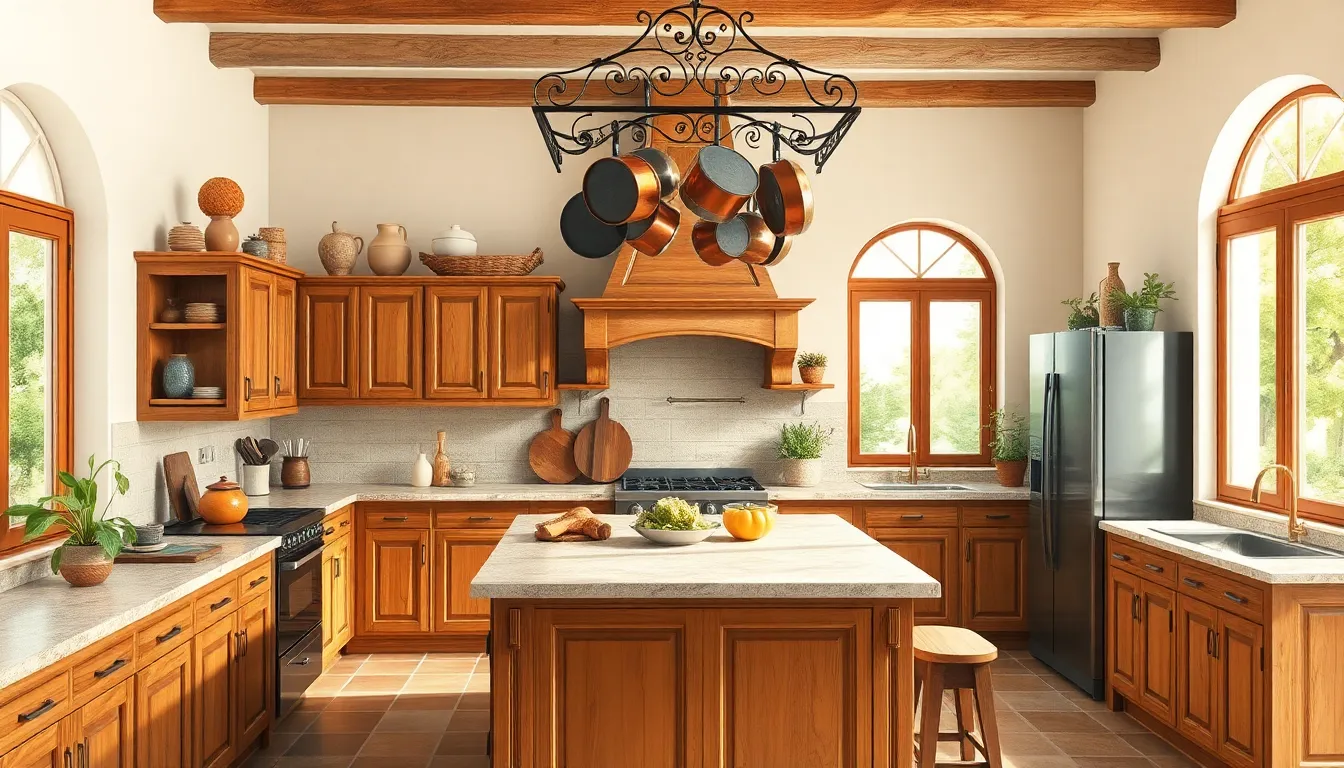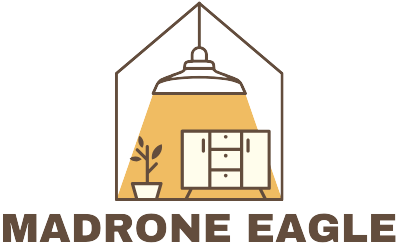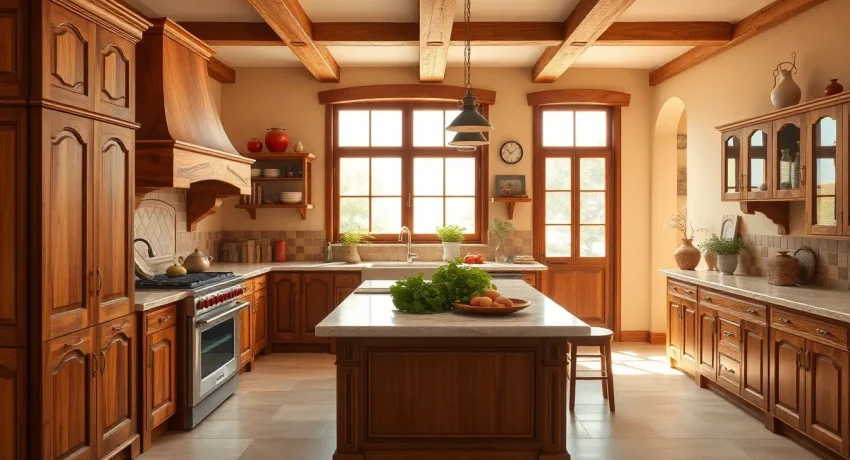When it comes to cooking, nothing beats the charm of an Italian kitchen. It’s not just a place to whip up spaghetti; it’s where culinary magic happens. Imagine the aroma of fresh basil, the sizzle of garlic in olive oil, and the sound of laughter echoing off terracotta walls. Who wouldn’t want to spend their evenings in a space that feels like a warm embrace from Nonna herself?
Italian kitchens blend rustic elegance with modern functionality, creating a perfect backdrop for family gatherings and gourmet adventures. From the vibrant colors to the inviting layout, every detail invites creativity and joy. So whether you’re a seasoned chef or just trying to master the art of boiling water, an Italian kitchen is the ultimate playground for anyone who loves food. Let’s dive into the heart of this culinary haven and explore what makes these kitchens the stuff of dreams.
Table of Contents
ToggleOverview of Italian Kitchens
Italian kitchens embody the essence of warmth and hospitality. These spaces reflect a rich culinary heritage characterized by vibrant colors, natural materials, and timeless designs. Known for their combination of rustic charm and contemporary efficiency, Italian kitchens appeal to a wide range of tastes.
Common elements include wooden cabinetry, stone countertops, and tile backsplashes, creating an inviting atmosphere. Designers often prioritize open layouts to facilitate social interactions during meal preparation. In addition, tools like hanging pot racks and spacious islands enhance functionality while promoting accessibility.
Colors play a significant role, with palette choices like earthy tones, whites, and bold accents creating a distinctive look. Vintage and handmade elements, such as ceramics and wrought iron, further emphasize the personal touch found in Italian kitchens. Incorporating natural light through large windows brightens the space, enhancing the overall ambiance.
Appliances in these kitchens balance modern technology and traditional aesthetics. High-quality materials ensure durability while maintaining style. Many opt for restaurants’ sleek designs, integrating professional-grade equipment into home kitchens for effortless cooking.
Designers often focus on ergonomics, ensuring that every element, from countertops to cabinet height, encourages ease of use. They consider storage solutions crucial, maximizing space for cookware and ingredients. The layout usually supports both cooking and socializing, mirroring the Italian culture’s emphasis on family and togetherness.
Overall, an Italian kitchen serves as a central gathering place, where food, family, and friendship intertwine. Each feature harmonizes with the others, creating a culinary sanctuary ideal for every chef.
Key Features of Italian Kitchens

Italian kitchens showcase a captivating blend of functionality and aesthetic appeal. The design prioritizes warmth and hospitality, making them ideal spaces for cooking and gathering.
Design Elements
Wooden cabinetry often dominates Italian kitchens, portraying a rustic yet elegant feel. Stone countertops add durability and character, serving as functional workspaces. Tile backsplashes introduce texture and intricate patterns, enhancing visual interest. Open layouts encourage social interactions during meal preparation. Islands might feature hanging pot racks, making efficient use of vertical space. Vintage elements such as wrought iron and handmade ceramics enrich the decor, creating a timeless atmosphere.
Color Schemes
Earthy tones serve as the foundation of Italian kitchen palettes, providing a warm backdrop. Whites add brightness, promoting an inviting ambiance. Bold accents, like deep reds or vibrant greens, inject personality and energy into the space. Natural light floods through large windows, reflecting off colorful surfaces and enhancing the overall cheerfulness. Color choices emphasize the rich culinary heritage, blending seamlessly with the design elements to create a cohesive look.
Types of Italian Kitchens
Italian kitchens come in various styles, each reflecting distinct aesthetics and functionalities. Two prominent types include traditional and modern Italian kitchens, both designed to enhance culinary experiences.
Traditional Italian Kitchens
Traditional Italian kitchens emphasize rustic charm. Elements like reclaimed wood beams and vintage cabinetry dominate the design, creating warmth and authenticity. Stone walls often feature, giving a classic Italian villa feel. Layouts prioritize open spaces for communal cooking and dining, encouraging family connections. Typically, fixtures include hand-painted ceramic tiles and wrought-iron details, infusing personality into the environment. Earthy color palettes, characterized by rich browns, reds, and greens, maintain an inviting atmosphere. Overall, these kitchens celebrate the culinary heritage of Italy, making them perfect for family gatherings.
Modern Italian Kitchens
Modern Italian kitchens integrate sleek design with advanced technology. Clean lines and minimalist aesthetics are common, promoting a sense of spaciousness. Sophisticated materials such as stainless steel appliances align with high-end finishes, providing a polished look. Bright whites and bold colors create a contemporary vibe, while open plans facilitate interaction. Innovative storage solutions optimize space, accommodating both cooking essentials and decorative elements. Natural light floods these kitchens through expansive windows, enhancing their appeal. Functionality merges with style, making modern Italian kitchens a favorite for culinary enthusiasts seeking elegance.
Material Choices in Italian Kitchens
Material choices significantly impact the aesthetic and functionality of Italian kitchens. A balance exists between traditional elements and modern enhancements.
Cabinetry Options
Wooden cabinetry dominates Italian kitchen designs, creating a rustic atmosphere. Reclaimed wood adds character and authenticity, while sleek finishes in modern kitchens provide a contemporary edge. Popular choices include oak, walnut, and cherry, each offering unique grains and colors. Shaker-style doors and open shelving enhance accessibility and showcase culinary tools and dishware. Painted cabinetry in vibrant hues complements neutral colors, contributing personality. Custom cabinetry ensures tailored storage solutions, maximizing space for pots, pans, and ingredients.
Countertop Materials
Countertops commonly feature natural stone for durability and beauty. Granite, marble, and quartz offer distinct advantages, with granite renowned for resilience and marble celebrated for its elegance. Unique patterns and colors create visual interest, enhancing overall design. Silestone and Corian provide low-maintenance alternatives with modern aesthetics. Additionally, wooden countertops inject warmth into the kitchen, promoting a cozy environment. Choosing materials with varying textures, like honed or polished finishes, adds depth and visual appeal. Ultimately, the selection enhances both functionality and style, contributing to the Italian kitchen’s charm.
Italian kitchens are truly a celebration of culinary artistry and togetherness. Their inviting atmosphere encourages family and friends to gather and create lasting memories over delicious meals. The harmonious blend of rustic charm and modern functionality makes these spaces not just practical but also aesthetically pleasing.
With a focus on natural materials and thoughtful design, Italian kitchens foster creativity and comfort. Whether one prefers the traditional warmth or the sleek elegance of modern styles, there’s an Italian kitchen that resonates with every culinary enthusiast. Embracing the essence of Italy’s rich culinary heritage, these kitchens continue to inspire and delight those who step inside.




